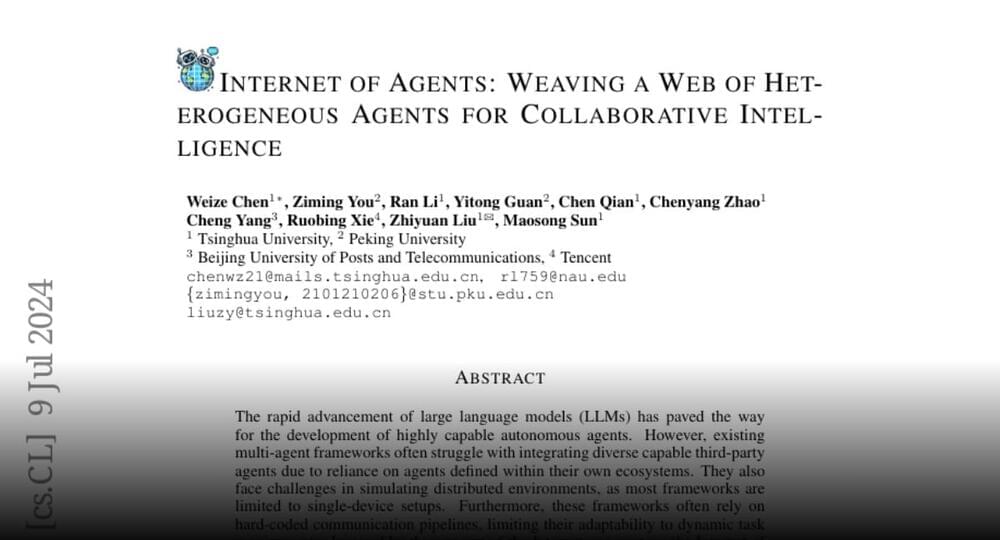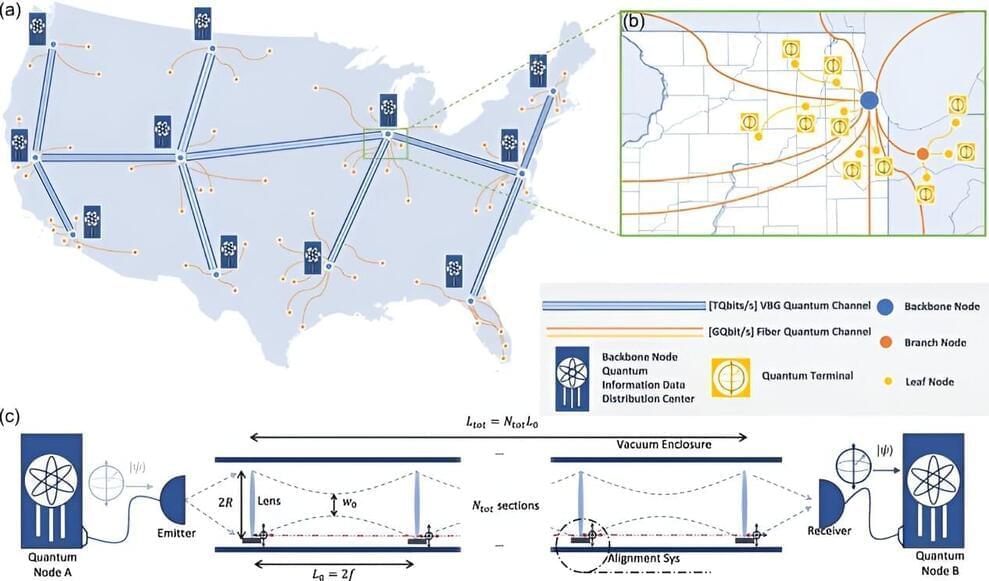Even robots are overworked.
Get the latest international news and world events from around the world.
Dr. Jeffrey DellaVolpe, MD — Saving Lives With Extracorporeal Membrane Oxygenation (ECMO) Technology
Is Medical Director of the Adult Extracorporeal Membrane Oxygenation (ECMO) Program at Methodist Hospital, San Antonio, Texas. He is also the Medical Director of the Cardiovascular Intensive Care Unit at Methodist Healthcare System and the Texas IPS Critical Care Service Line (https://texasips.com/jeffrey-dellavol…). He also serves as chair of the Joint Society of Critical Care Medicine/Extracorporeal Life Support Organization Task Force and has created a platform for ECMO training and ECMO transport (https://ecmotransports.com/about/).
ECMO is a form of extracorporeal life support, providing prolonged cardiac and respiratory support to persons whose heart and lungs are unable to provide an adequate amount of oxygen, gas exchange or blood supply (perfusion) to sustain life.
Dr. DellaVolpe served as a Flight Surgeon with the 27th Special Operations Wing where he deployed twice in support of Operation Enduring Freedom – Trans Sahara. After completing his fellowship, he was assigned to the San Antonio Military Medical Center where he served as a critical care physician and a member of the 59th Medical Wing Critical Care Air Transport Team and Acute Lung Rescue Team.
Dr. DellaVolpe is originally from Newport, RI. After receiving his bachelor’s degree at Dartmouth College, he went on to attend medical school at Tulane University School of Medicine. He then completed his residency in Internal Medicine at Tulane Medical Center and his fellowship in Critical Care Medicine at the University of Pittsburgh Medical Center.
Dr. DellaVolpe wrote The ECMO Book, published Elsevier Health Sciences, in 2023 (https://www.us.elsevierhealth.com/the…).
#JeffreyDellaVolpe #MedicalDirector #ExtracorporealMembraneOxygenation #ECMO #MethodistHospital #SanAntonio #Texas #Cardiovascular #IntensiveCare #CriticalCare #LifeSupport #ProgressPotentialAndPossibilities #IraPastor #Podcast #Podcaster #ViralPodcast #STEM #Innovation #Technology #Science #Research



Erasing ‘bad memories’ to improve long term Parkinson’s disease treatment
Common treatments for Parkinson’s disease can address short-term symptoms, but can also cause extensive problems for patients in the long run. Namely, treatments can cause dyskinesia, a form of uncontrollable movements and postures.
In a recent study published in The Journal of Neuroscience, researchers at the University of Alabama at Birmingham took a different approach to dyskinesia and treated it like a “bad motor memory.” They found that blocking a protein called Activin A could halt dyskinesia symptoms and effectively erase the brain’s “bad memory” response to certain Parkinson’s treatments.
“Instead of looking for a completely alternative treatment, we wanted to see if there was a way to prevent dyskinesia from developing in the first place,” said David Figge, M.D., Ph.D., lead study author and assistant professor in the UAB Department of Pathology. “If dyskinesia does not occur, then patients could potentially stay on their Parkinson’s treatment for longer.”

Run screaming or slow retreat? New study sheds light on brain responses to emotionally-charged scenes
The ability to recognize and respond to emotionally-charged situations is essential to a species’ evolutionary success. A new study published in Nature Communications advances our understanding of how the brain responds to emotionally charged objects and scenes.
The research, led by Trinity College Dublin neuroscientist Prof. Sonia Bishop, and Google researcher Samy Abdel-Ghaffar while he was a Ph.D. student in Prof. Bishop’s lab at UC Berkeley, has identified how the brain represents different categories of emotional stimuli in a way that allows for more than a simple “approach/avoid” dichotomy when guiding behavioral responses.
Sonia Bishop, now Chair of Psychology in Trinity’s School of Psychology, and senior author of the paper, explains, It is hugely important for all species to be able to recognize and respond appropriately to emotionally salient stimuli, whether that means not eating rotten food, running from a bear, approaching an attractive person in a bar or comforting a tearful child.

New method could yield fast, cross-country quantum network
Quantum computers offer powerful ways to improve cybersecurity, communications, and data processing, among other fields. To realize these full benefits, however, multiple quantum computers must be connected to build quantum networks or a quantum internet. Scientists have struggled to come up with practical methods of building such networks, which must transmit quantum information over long distances.
Now, researchers at the University of Chicago Pritzker School of Molecular Engineering (PME) have proposed a new approach—building long quantum channels using vacuum sealed tubes with an array of spaced-out lenses. These vacuum beam guides, about 20 centimeters in diameter, would have ranges of thousands of kilometers and capacities of more than 1,013 qubits per second, better than any existing quantum communication approach. Photons of light encoding quantum data would move through the vacuum tubes and remain focused thanks to the lenses.
“We believe this kind of network is feasible and has a lot of potential,” said Liang Jiang, professor of molecular engineering and senior author of the new work. “It could not only be used for secure communication, but also for building distributed quantum computing networks, distributed quantum sensing technologies, new kinds of telescopes, and synchronized clocks.”

No GPS, no problem: Researchers are making quantum sensing tools more compact and accurate to replace GPS
Fundamental physics—let alone quantum physics—might sound complicated to many, but it can actually be applied to solve everyday problems.
Imagine navigating to an unfamiliar place. Most people would suggest using GPS, but what if you were stuck in an underground tunnel where radio signals from satellites were not able to penetrate? That’s where quantum sensing tools come in.
USC Viterbi Information Sciences Institute researchers Jonathan Habif and Justin Brown, both from ISI’s new Laboratory for Quantum-Limited Information, are working at making sensing instruments like atomic accelerometers smaller and more accurate so they can be used to navigate when GPS is down.
Cognify — A Prison Of The Mind We’ve Seen Before In SF
So I serve a hundred years in one day…’- Joe Haldeman, 2011.
Robot Preachers Found To Undermine Religious Commitment ‘Tell me your torments,’ the Padre said, in an elderly voice marked with compassion. — Philip K. Dick, 1969.
Gaia — Why Stop With Just The Earth? ‘But the stars are only atoms in larger space, and in that larger space the star-atoms could combine to form living matter, thinking matter, couldn’t they?’ — Robert Castle, 1939.

UPDATE: Spectrum blames damage caused by Hurricane Beryl for massive internet outage across Texas
We’re based in Austin, Texas and this outage is affecting us. Well, it affected us for 30 seconds which is how long it took to switch over to Starlink. Go SpaceX!
So I’m bouncing this message off of a constellation of satellites orbiting the Earth.
5:40 P.M. UPDATE: Spectrum has issued a statement saying a massive outage of its internet, phone and cable TV service across the state is due to damage caused by Hurricane Beryl. “The outage is due to a third-party infrastructure issue caused by the impact of Hurricane Beryl,” the company said at 5:30 p.m. Tuesday. “We apologize for the inconvenience and are working with the third party to resolve this as quickly as possible.” The Bexar County…